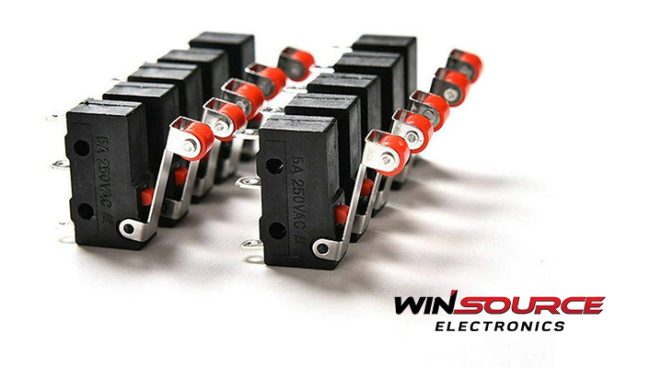
Operating Temperature
One of the critical considerations in micro switch design is the operating temperature range. Micro switches are often used in diverse environments, ranging from industrial machinery to consumer electronics. The operating temperature defines the range within which the switch can function optimally without compromising its performance or durability.
Micro switches are engineered to withstand specific temperature extremes, ensuring reliable operation in both high-temperature and low-temperature environments. The materials used in the construction of switches, such as thermoplastics and metals, are selected to maintain stability and functionality across a broad temperature spectrum.
Contact Current
Understanding the contact current of a micro switch is imperative for ensuring its compatibility with the intended application. The contact current is the maximum electrical current that the switch can safely handle. It is a crucial parameter, especially in applications where the switch is a part of a larger electrical circuit.
Micro switches come in various configurations with different contact current ratings. When selecting a micro switch for a particular application, it is essential to match the contact current rating to the electrical load it will encounter.
Failure to adhere to this specification can lead to overheating, arcing, and ultimately result in the degradation of the switch and the overall system.
Actuator Style
The actuator style is a key design aspect that determines how the micro switch responds to external stimuli. Micro switches can have various actuator styles, each tailored to suit specific applications. Common actuator styles include lever, roller lever, button, and simulated roller.
The choice of actuator style depends on the mechanical movement that the application demands. For instance, a roller lever actuator is suitable for applications requiring a sliding or rolling motion, while a button actuator is ideal for applications that involve a simple push or press. Careful consideration of the actuator style ensures that the micro switch seamlessly integrates into the overall system, providing precise and reliable functionality.
Pin Style
Micro switch design also encompasses the configuration of electrical connections, commonly referred to as pin style. The pin style determines how the micro switch is integrated into the circuit. Common pin styles include solder terminals, quick-connect terminals, and PCB (Printed Circuit Board) terminals.
The selection of pin style is influenced by the specific requirements of the application and the ease of integration into the circuit. Solder terminals are suitable for applications where a permanent connection is desired, while quick-connect terminals facilitate easy and quick installation and removal. PCB terminals are ideal for applications where the micro switch is directly mounted onto a circuit board.
Circuit
The circuit configuration of a micro switch is a critical aspect of its design, influencing how it interacts with the broader electrical system. Micro switches are available in various circuit configurations, with the most common being single-pole, double-throw (SPDT) and single-pole, single-throw (SPST).
In an SPDT micro switch, there are three terminals – common, normally open, and normally closed. This configuration allows the switch to control two separate circuits simultaneously. On the other hand, an SPST micro switch has two terminals – common and normally open or normally closed – and is suitable for applications that involve a single circuit.
The choice between SPDT and SPST configurations depends on the specific requirements of the application, such as whether the switch needs to control multiple functions or just a single function.
Mechanical Life
The mechanical life of a micro switch is a crucial factor in determining its longevity and reliability. Mechanical life refers to the number of cycles the switch can endure while maintaining its specified performance. This parameter is especially important in applications where the micro switch undergoes frequent actuations, such as in industrial machinery or gaming peripherals.
Manufacturers often provide a mechanical life rating, indicating the expected number of cycles the micro switch can handle before experiencing wear or failure. Choosing a micro switch with an appropriate mechanical life rating ensures that it can withstand the demands of the application, contributing to the overall durability and reliability of the system.
Voltage Rating
The voltage rating of a micro switch is a fundamental consideration in its design, dictating the maximum voltage it can safely handle. Micro switches are designed to operate within specific voltage ranges, and exceeding these limits can lead to electrical breakdown, arcing, and potential damage to the switch and connected components.
When selecting a micro switch, it is crucial to match the voltage rating to the electrical specifications of the application. This ensures that the switch can reliably and safely operate within the designated voltage range, contributing to the overall stability and efficiency of the system.
Micro switches, with their compact size and precise actuation, enable seamless integration into complex systems where accuracy and responsiveness are paramount. The thoughtful consideration of materials, contact mechanisms, and overall construction in micro switch design directly influences the switch’s lifespan and resistance to environmental factors.
When sourcing micro switches for your applications, it is crucial to prioritize reputable distributors to ensure the reliability and performance of your systems. One such distributor is WIN SOURCE. They deal in a great number of electronic components that are of superior quality.
© 2025 Win Source Electronics. All rights reserved. This content is protected by copyright and may not be reproduced, distributed, transmitted, cached or otherwise used, except with the prior written permission of Win Source Electronics.

COMMENTS